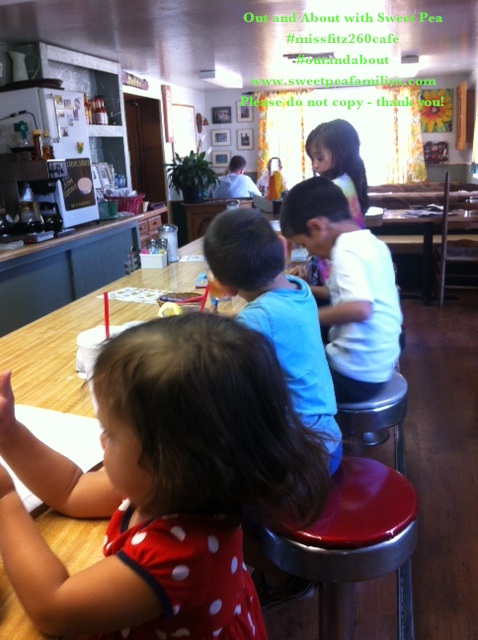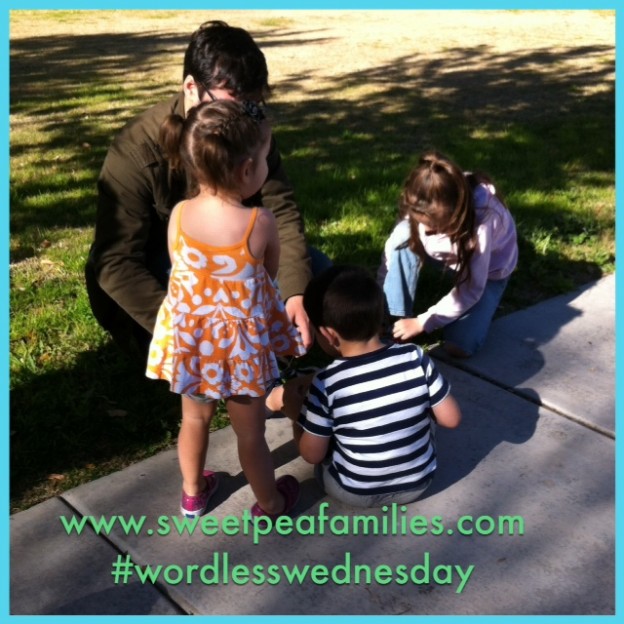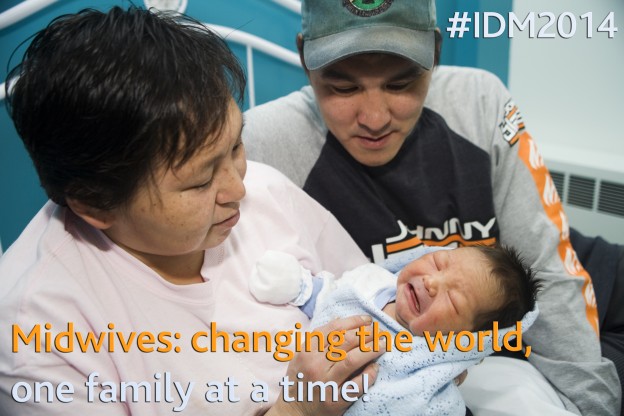This article is a part of the Carnival of Natural Mothering hosted by GrowingSlower, Every Breath I Take, I Thought I Knew Mama, African Babies Don’t Cry, and Adventures of Captain Destructo. This month’s topic is Siblings. Be sure to check out all of the participants’ posts through the links at the bottom of this page.
Prompt: Siblings
There is no relationship quite like the sibling relationship! Tell us how you prepared your family for the addition of a new baby. We’d love to hear how you foster a strong bond between your kids. Or, maybe you’d like to write about lessons learned from your own sibling relationships. Let’s talk about ways we can foster love and connection between our children this month.
Sibling preparation…this is a topic that has been coming up a lot lately…very exciting times for our students and our homebirth community!! Thoughtful families wonder how they can best ease the transition as they add siblings.
 Here is our brood enjoying counter-time at a local diner.
Here is our brood enjoying counter-time at a local diner.
We are by no means experts. What I have listed below are the things that have worked for our family. Please feel free to add your suggestions and advice in the comments!
PREGNANCY
1.) We made a family birth plan using words and pictures
2.) We did family relaxation practice and labor rehearsals to help them prepare for labor and birth…
- we talked about what a “working face” looks like – tension/pain vs. relaxation face
- we talked about blood – ouchy blood from a cut vs. labor blood that means mommy’s body is working
3.) Point out other children who were big brothers and sister and talked about the kinds of things they were doing and the baby who was “just sleeping” or “just sitting”
4.) Depending on interval between children:
Have siblings help clean/set out the newborn items.
Use it as an opportunity to share
- how they were so little once
- how neat they are at their current age (point out all the things they have learned since then)
- boundaries and expectations for their interaction with the newborn (you can hug and kiss baby while mommy is holding baby; if you want to, you can hold baby if I help you; you can help pick out clothing, diapering, bathtime, etc.)
BIRTH
1.) With caregivers during labor: Children had a box especially set aside of new things to play with: play-dough, coloring books and crayons, books, a little toy car or miniature dolls, disposable camera
2.) Homebirth – give the children the opportunity to participate as little or as much as they wanted to. They could come in where we were laboring, they could walk with us, eat with me, nap – or not.
3.) First visit/immediately after:
Giving a gift to the older sibling(s) from the newborn (Note: This worked especially well for our oldest who’s love language is giving gifts)
PREGNANCY+POSTPARTUM
1.) We did lots of reading/picture books that explored pregnancy and new babies/siblings
2.) Toddlers tend to be egocentric – make it work in your favor.
You are big! You can _____ , not the baby, (s)he is too little. (spoken in a sing-song voice for emphasis.)
– eat (their favorite food)
– run
– play
– go (special trip)
– mention things they can do by themselves
3.) Reminding them that the baby was not going to be fun like them until they were older – they would have to let the baby sleep, nurse, and grow before they were ready to play. I phrase this in relation to a season or the siblings age.
The baby will be able to respond to you/play ___ with you
– in the (season)
– when you are (age)
– after you turn (age)
4.) Use whichever phrasing resonates with your child. We would set the expectation for 6-9 months for responding; after the 1 year birthday for actually playing things like ball, climbing, hide and seek, etc.
5.) It will look like a lot of work/It is a lot of work for mommy because the baby is going to need lots of help/sleep/breastfeeding instead of being a big helper like you;
Children of any age:
Big Helpers
Letting the children help with newborn in age appropriate ways – picking out clothing, doing diapers with assistance, bringing mommy snacks or water. The key here was only if they wanted to help – we never wanted them to feel like they existed to be our “go-fers”
What can they do independently?
Point out those things and let them do them. Recognize their initiative whenever they make an attempt to do something for themselves, even if you have to help them re-do it or clean up a mess – hard to do when you are tired from caring from a newborn, I know.
What centers around them?
Favorites
Do they have a favorite book/story/food/activity? Choose them! Often!
Field trips
Is there someone you trust that you they can special dates with? (other parent, grandparents, aunts/uncles) Arrange anything from free picnic+park dates to things that cost $$, give them independent time, and as a bonus – you get alone time with your newborn! The key again is to build them up as the big kids that are old enough to go do special things – not the baby – they’re too little.
“Let’s let the baby sleep so that we can play together. I want to play with you!”
This reinforces the idea that the baby needs to sleep so that the older child doesn’t pinch, kiss, hug, whatever to get the crying reaction that they find so curious! In addition, if they can be patient and quiet, the big reward is getting you all to themselves!
“I have something to tell you, so scoot over here and come closer to me.”
Changing the tone – whisper to them so that they have to be quiet to hear you.
Family bath time with mommy, baby, siblings in the tub and Daddy supervising and drying off kiddos as they came out of the tub
Sensory play
– water
– sand
– beans
– rice
– make a bin with different textures and colors
Sensory bins are a great way to engage them in exploration and busy-ness without having to do a lot on your part (other than set it up!). You and the baby can sit with the older siblings and watch and interact while the older siblings entertain themselves with pouring, feeling, and learning.
Going out for a walk or a drive together
Fresh air and sunshine are good for everyone!
FILL THEIR CUP
I will close with this idea from Charlotte Mason, a 19th century British educator whose works have come to light again as parents search for alternatives to cookie-cutter education
Every day, children need something to love, something to do, something to think about.
If you believe that this is a valid philosophy, then think of the ways that you can fill those needs as parents. I feel that if we are meeting their needs, then one presumes that their cup is full and they are less likely to act out in search of attention “just because”.
What worked to ease the transition to more siblings in your family?
Read more about Sibling Preparation on our Sweet Pea Births blog


